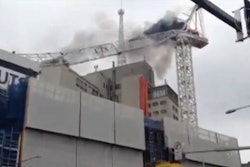

With housing construction at its highest rate in four years, construction spending up 14 percent since the market bottom in February of 2008 and building permits for houses and apartments up 31 percent over 2011, there is much cause for optimism in the U.S. construction industry.
However, there is much cause for concern as well. Between January 2007 and last year, the industry shed 2.2 million workers, according to a report by USA Today. And it turns out a great deal of those workers aren’t interested in coming back to work on the jobsite.
Instead, about 320,000 skilled workers left the industry to retire or take what they consider to be more stable jobs such as driving a truck or doing factory work. But here’s the kicker: even though these jobs may mean as much as a 50 percent cut in pay, these workers are turning down the construction jobs that have recently returned because they’re not confident the construction industry is on firm ground just yet.
The problem is further compounded by the lack of interest high school and college students have in the industry. A separate USA Today report found that far fewer high schools and community colleges are offering construction training courses than a generation ago.
And even in the schools where these classes are available, students are avoiding them as their parents steer them away from these types of jobs and toward a college degree instead.
To combat this sentiment, USA Today reports that construction officials have begun visiting high schools to pique students’ interest in a construction career by reminding them that workers average between $40,000 and $57,000 each year while managers average around $75,000.
The result? As USA Today reports, some contractors are dealing with managers of competing companies actually walking up to their jobsites and poaching their workers. If something doesn’t change soon the Construction Labor Market Analyzer’s forecast of a labor shortage of 2 million by 2017 is even more likely to come true.









